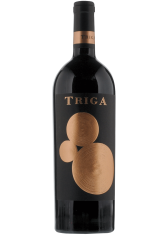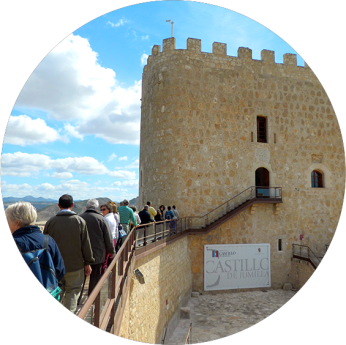
I can’t believe we’re already in the home stretch of the 2016 Vuelta a España. The past two and a half weeks have flown by, although I’m not sure the peloton would agree. By all accounts, this year’s race has been arduous, even by Vuelta standards, with more mountain stages than ever. As I mentioned in my first post, most of the world-class sprinters on the pro cycling circuit opted to skip this race, deeming the potential juice not worth the leg-crushing squeeze. Probably a safe bet.
During week one, the race centered on beautiful, Green Spain, represented by the region of Galícia, most famous for its varietal wines crafted from the aromatic and robust grape, Albariño. Week two sent the peloton further east and north, through the vertiginous slopes of Ribeira Sacra and Ribeiro, home to the luscious red wines from Mencía, and the hedonistic whites from Godello. If you’ve been sipping along, toasting the riders as they make their way through northern Spain, you’ve been having a lot more fun than the guys on the bikes. A trend that will continue through the last week of the race, trust me.
Over the last few days of the 2016 Vuelta, before heading to Madrid for the final reckoning, the riders hop down to the eastern Mediterranean coast, just outside the large port city of Valencia. They’ll take in the lovely, semi-mountainous terrain while cycling about 100 miles a day in scorching temperatures likely to exceed 100 degrees Fahrenheit. Lucky us! We will watch their escapades from the comfort of our couches, with a glass of something delicious in hand.
The Levant
This area of Spain takes its name from the Spanish verb levantarse, which means to get up or rise up. According to local legend, the sun kisses this spot of the Iberian peninsula first, when it climbs into the sky each day. What they forget to mention is that it stays on this part of the peninsula most of the day, especially during summer, making it hot and very dry. At higher elevations, this can be good for wine grapes, as it staves off diseases that come calling in more humid climates. Fertile soils at sea level are less optimal for fine wine grapes, but give a boost to many other agricultural products, notably the famed Valencia oranges and rice. Outside of southeast Asia, there are more rice paddies in Valencia proper than anywhere else in the world. So it should come as no surprise that paella, a dish that millions associate with Spain in general, was born right here in Valencia.
When we talk about wine in the Levant, we’re focused on two states or autonomías: Valencia and Murcía, each of which contains three specific Denominaciones de Origen (DOs.) Let’s look at the Valencia DOs first.

Valencia Autonomía
The earliest records of commercial grape production in Valencia go back to the times of the Phoenicians, and are consistent throughout the rule of the Iberians, Greeks, Romans, and the Moors. All except the Moors, whose religious laws forbade the intake of alcohol, made wine both for sacramental and recreational purposes. The Moors preferred to eat and cook with grapes. After the Christians regained control of Spain during the Reconquista, wine again became a major enterprise. In summing up the styles of wine produced in the three DOs of Valencia, local residents describe them as such: Valencia DO makes the aperitifs; Utiel-Requena’s wine goes with the main course; and Alicante brings the dessert wine. Let’s take a closer look at the three DOs of Valencia:
Valencia DO
This area is divided into four sub-zones. The first, Upper Túria, is located in the hills northwest of the city of Valencia, and produces mostly white wines from Merseguera, Macabeo, and Planta Fina. Valentino, just to the west of Upper Túria, is a larger area with diverse terrain encompassing a mixture of soil types and micro-climates. It produces wines of all styles and types, using the same white grapes as Upper Túria, and the red grapes Tintorera, Tempranillo, and some Cabernet Sauvignon. Moscatel de Valencia, lying southwest of Valentino, is famous for its Moscatel-based wines, particularly mistela, a mixture of grape juice and alcohol, which was invented by the Dutch to stabilize wines intended for long sea voyages. Finally, Clariano, the southernmost DO of Valencia, has two different winemaking zones: a coastal region favorable to white grapes, and a warmer, drier interior zone, where red wines are made from Monastrell (Mourvèdre), Cabernet Sauvignon, Merlot, and Tempranillo, is varying blends. The Valencia DO is also renowned for its sweet wines.
Utiel-Requena DO

Along the border with Castilla-LaMancha, this region shares the continental climate of Spain’s high plateau, and is crossed by the rivers Túria and Cabriel. The western edges of Utiel-Requena are hot and arid and, for many years gave rise to highly pigmented and notoriously tannic wines made in the doble pasta method. Intended to bolster paler, weaker wines, doble pasta wines are made by removing a portion of fermented must, replacing it with another layer of grapes. The result is a doubling of the skin-to-pulp ratio, and a highly concentrated wine. Today doble pasta wines have been replaced in large part by grape concentrate, a major product of the region.
Fine wine producers have had success with the Bobal grape, and are incorporating Tempranillo, Syrah, Merlot, and Cabernet Sauvignon into their vineyards. Most production (95%) is red or Rosado.
Alicante DO

Like many regions in southern Spain, Alicante was traditionally a sweet-wine producer, known for its distinctive unfortified wines. As early as the 15th century, wines called Fondillón, made predominantly from Monastrell, became popular throughout Spain and abroad. The residual sugar in the wine came from the natural sugars in the grapes, which were harvested as late in the season as possible.
Alicante, which became a DO in 1957, makes joven wines (simple wines destined for early consumption) of all three colors: white from Merseguera, Rosado from Garnacha, and red from Monastrell.
If you’ve ever traveled to Spain during the Christmas holidays, you’ve probably tried another of Alicante’s specialties: turrón. This almond and nougat candy is ubiquitous during Las Navidades, and comes in crunchy and chewy varieties. It’s addictive. Don’t say I didn’t warn you!

Murcia Autonomía
Founded in the 9th century by Moorish Caliph, Abdu’r Rahman, this swath of the Levant has fertile territory suitable for mass agriculture. Its largest crops are the local oranges, melons, rice, and grapes. Hardly surprising that Murcía is home to a major fruit canning center. The Autonomía boasts three DOs:
Bullas DO
A town with Roman origins, Bullas lies in the southwest of Murcía. It is red wine country, relying on the Monastrell grape, which clearly loves the hot arid climate here. Some Rosado is also produced.
Jumilla DO

This DO lies half within Murcía and half within Castilla-LaMancha, and you’re as likely to see almond trees and olive groves as you are vineyards. Jumilla’s hot, dry climate and sandy soils kept it phylloxera-free for almost 100 years after the plague destroyed vineyards across the rest of Europe and much of Spain. When it came time to pull up the decimated vines and replant, local authorities wisely took a long look at traditional viticultural methods and decided to change some things. They selected new clones that were better suited to the terroir and integrated modern vineyard and winemaking techniques to create higher-quality wines. Today, production has shifted away from the doble pasta wines of the past to modern blends incorporating Monastrell, Tempranillo, and Merlot. A good example of the modern style is made by Hijos de Juan Gil, a wine that is readily available in US markets, and at an attractive price point.

Yecla DO
Another bastion of red wine production, with Monastrell making up more than 85% of all plantings, Yecla is also home to the largest wine cooperative in all of Spain: La Purísima. That said, there are experimental winemakers forging ahead in Yecla, testing out new blends that include international varieties like Cabernet Sauvignon, Tempranillo, and Merlot. Bodegas Castaño’s wines are well-worth searching out.

Looking Ahead
So let’s toast to the peloton one last time before the festivities in Madrid on Sunday. Wines from Jumilla and Yecla are easily found in most shops, and make perfect accompaniments to grilled meats and barbecue. Enjoy one last summery weekend on the patio with a glass of wine born from that special place in the Levant, where the sun first kisses Spain each day.
I’m in love!!
LikeLiked by 1 person
Thanks! I love Spain so much – watching the Vuelta was a virtual trip there. Reminds me I need to go back in person.
LikeLiked by 1 person